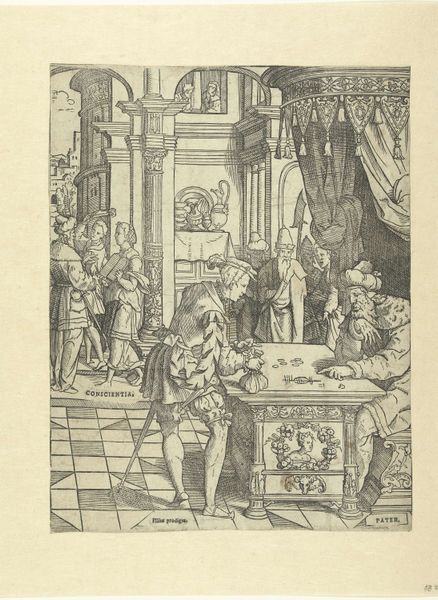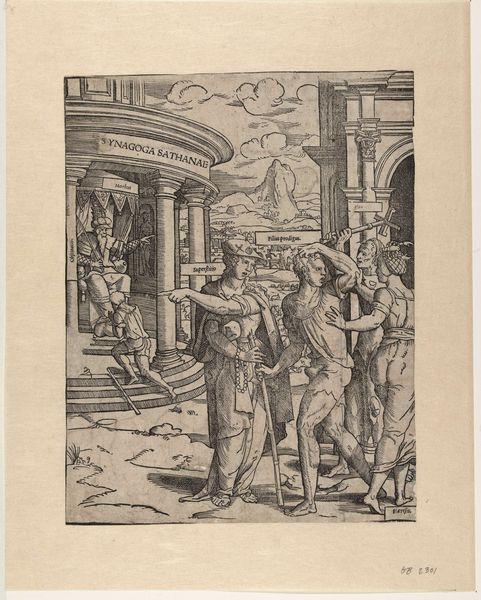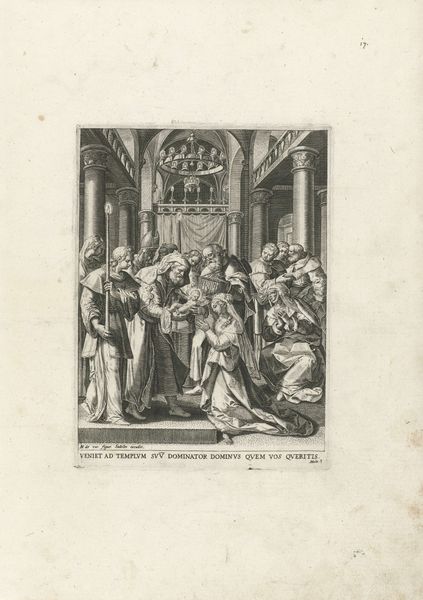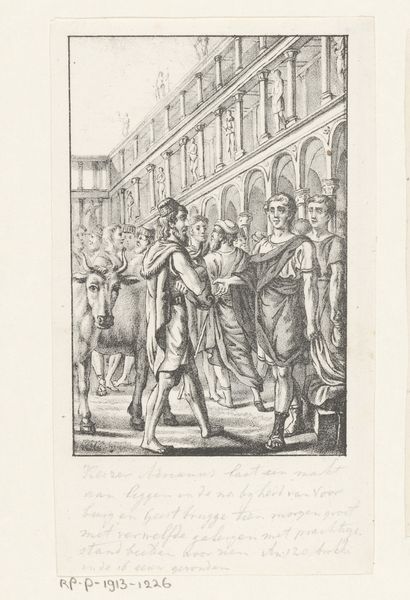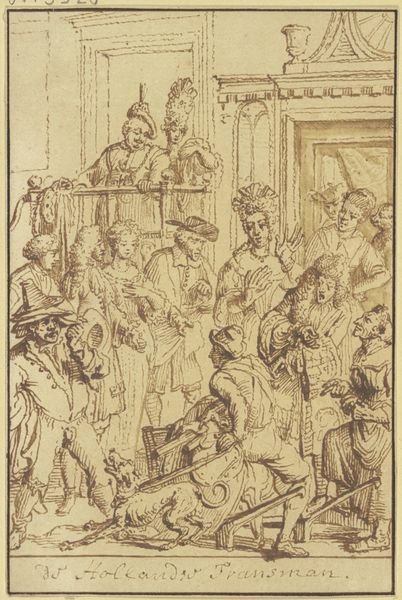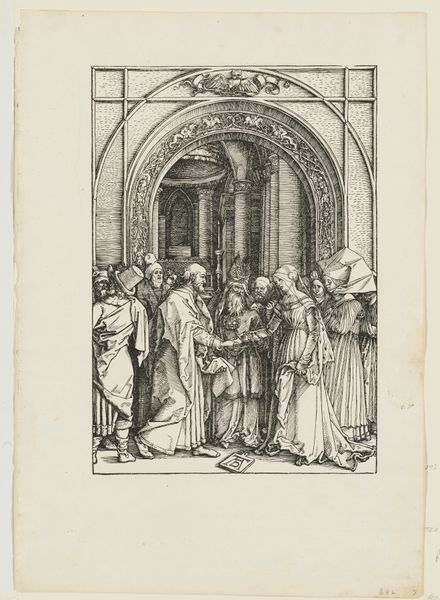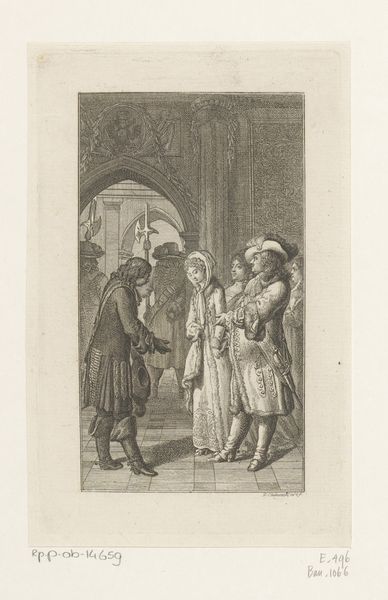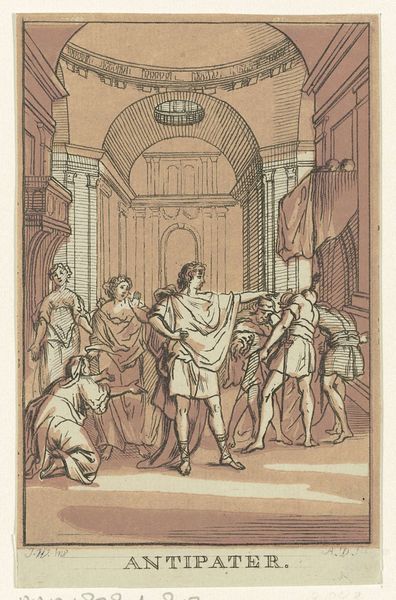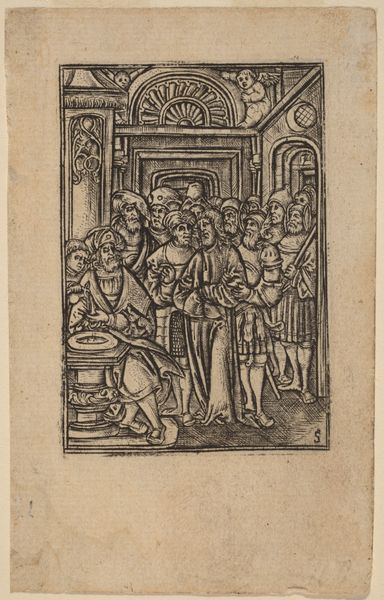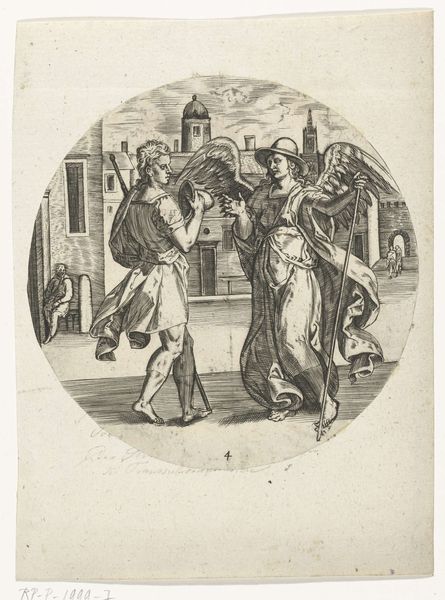
print, engraving
# print
#
old engraving style
#
figuration
#
history-painting
#
northern-renaissance
#
engraving
Dimensions: height 270 mm, width 208 mm
Copyright: Rijks Museum: Open Domain
Curator: This engraving, "The Reconciliation and Forgiveness of the Prodigal Son" by Cornelis Anthonisz. dated around 1535-1545 and housed here at the Rijksmuseum, is quite the narrative compressed into a single image. Editor: It really is. I find the density of detail fascinating. The contrast of the figures feels really dramatic. What is your take on it? Curator: I'm immediately drawn to the materiality and production of this engraving. Think about the labor involved in meticulously carving those lines into a metal plate. It was clearly designed for reproduction and widespread distribution. The subject matter is secondary to understanding how the work itself democratized access to biblical narratives. It’s also critical to understand what papers were available in 16th century Netherlands and what the different papers would communicate to the audience then. Editor: That makes me see it differently. So, the material—the engraving, the paper—is part of the message itself? How does that connect with, say, the obvious religious content? Curator: Exactly! The act of reproduction through printmaking transforms the meaning. It removes the uniqueness of a hand-painted artwork, creating a mass-produced item, almost a commodity. Look at those scenes within scenes – baptism, communion. Religious sacraments, now also items accessible to a growing middle class. Is this about devotional piety or broader social shifts driven by accessible visual culture? Editor: It sounds like you're arguing that the rise of printmaking enabled not just the spread of religion, but a new kind of relationship with it. Sort of demystifying faith, almost? Curator: Precisely. And the accessibility influenced interpretations and challenged power structures controlled by the Church and wealthy elite, right? It’s a new age where the making process democratizes understanding and potentially subverts existing authorities through broader consumption. Editor: I hadn't considered the print itself as a vehicle for social change, and it makes you appreciate it even more. Thank you. Curator: And for me, it highlights how focusing on material conditions challenges assumptions and reveals unexpected meanings within this powerful image.
Comments
No comments
Be the first to comment and join the conversation on the ultimate creative platform.
